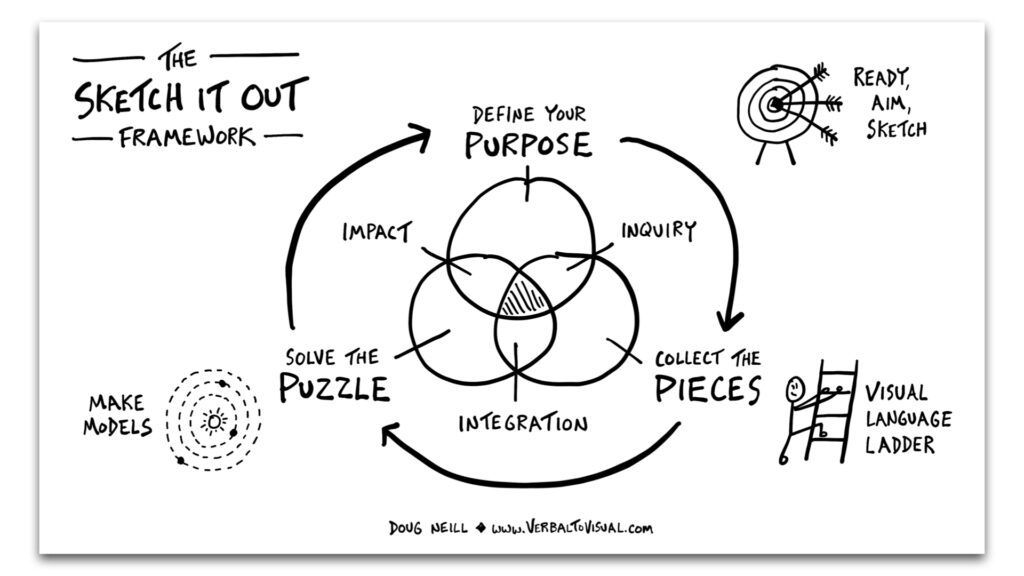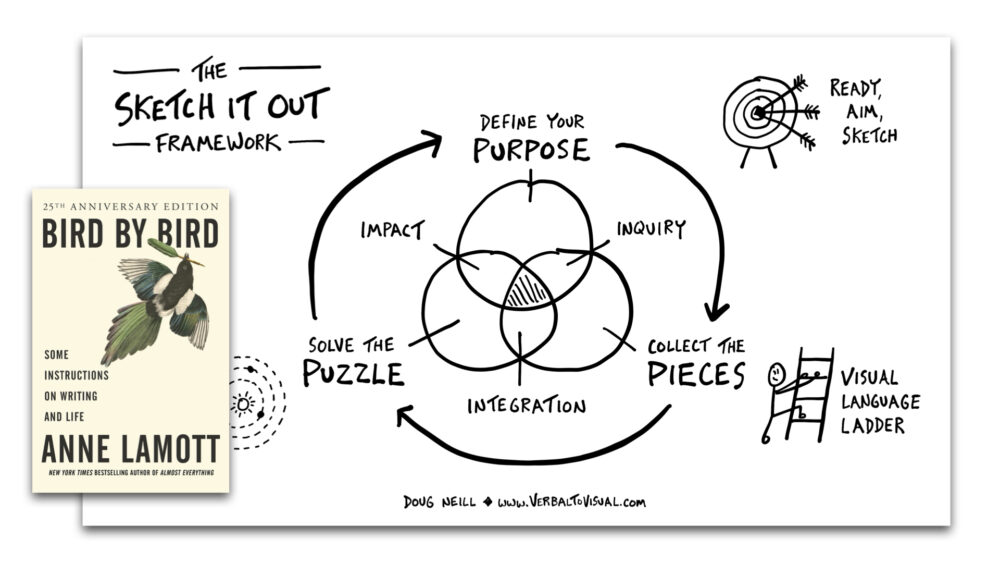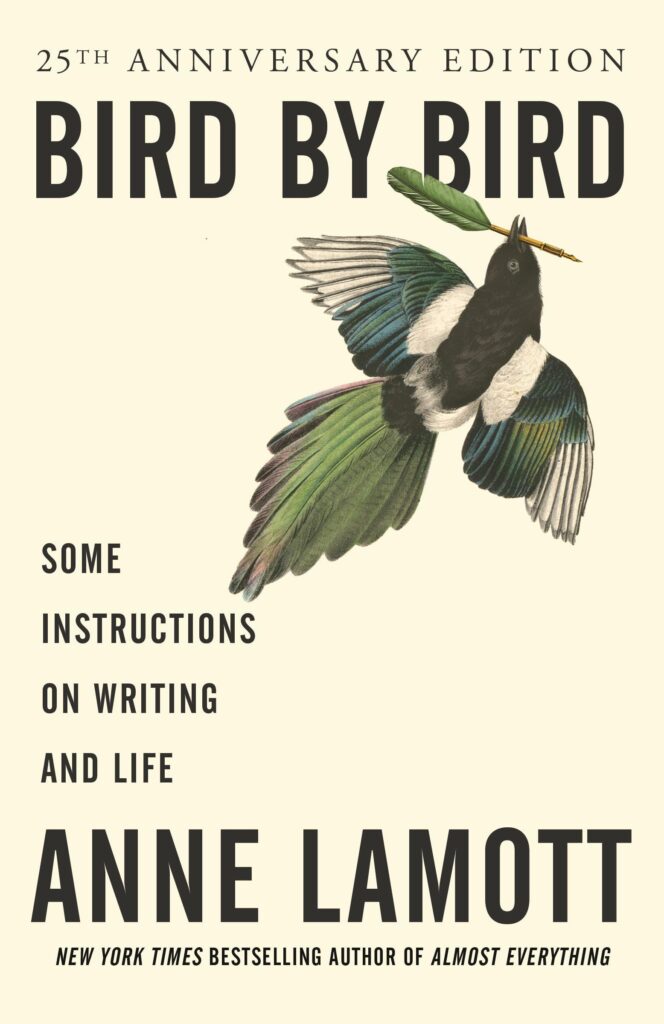You sit down with your notebook and pen, ready to tackle that complex project that’s been bouncing around in your head.
You’ve got a lot to figure out, and the pieces don’t quite fit together yet. The whole thing feels overwhelming.
So you stare at the blank page. And then you close your notebook and walk away.
Sound familiar?
Here’s what I want to remind you: you don’t have to capture the full complexity of that topic all at once.
In the Overcoming the Barriers lesson within The Verbal to Visual Curriculum, I address the challenge of working with complex topics. One of my favorite pieces of advice comes from writer Anne Lamott in her book Bird by Bird.
When Lamott’s brother was young, he had to write a school report about birds. The project felt massive and he was completely overwhelmed. That’s when their father sat down with him and said: “Bird by bird, buddy. Just take it bird by bird.”
The same principle applies to your visual thinking work.
Model by model.
When a topic feels too big, too interconnected, too sprawling to capture in a single sketch, you’re probably right. It is too complex for one page.
But that doesn’t mean you can’t start.
Pick one corner of that complex system. Choose the piece that matters most right now, the component that’s most relevant to your current challenge, the relationship between two elements that you need to understand better.
Make one model. Then make another.
Maybe you start with the high-level view, the 10,000-foot perspective that shows how the major components relate to each other. That’s your first model.
Then you pick one of those components and give it its own page. That’s your second model.
You’re working in layers. You’re chunking the complexity down into manageable pieces. You’re building understanding incrementally rather than trying to capture everything at once.
That’s exactly what I do with The Sketch It Out Framework in the curriculum. First, I give you the overview—the full process from start to finish. Then I create separate models for each individual step, going deep on one piece at a time.

You can do the same thing.
Look at that complex topic sitting in front of you. Instead of asking “How do I capture all of this?”, ask yourself:
- What’s the one aspect of this topic that would be most valuable to understand right now?
- What would a simplified, high-level view look like?
- Which single component deserves its own dedicated model?
Pick one of those questions. Grab your pen. Make one model.
Don’t worry about the rest yet. You’ll get to the other birds eventually.
Just go model by model.
If you’d like support developing a systematic approach to visual thinking, one that helps you break down complex topics and build models with confidence, The Verbal to Visual Curriculum is here for you.
Inside, you’ll find a complete framework for creating visual models, plus a global community of visual thinkers and weekly live events to help you address the exact challenges you’re facing right now.
I invite you to join us there.
Cheers,
-Doug

